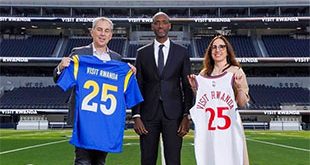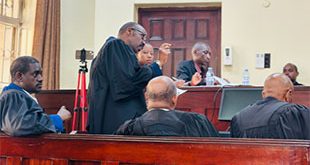
By Mubatsi Asinja Habati
In the March 22 Parliamentary by-elections in Rukiga County, NRM’s Edson Kakuru defeated three rivals after polling 10,910 votes against his closest opponent – FDC’s Jack Sabiiti with 9,329, Independent candidates Amos Mugisha’s 6,786 votes and Medard Gumusiriza’s 291 votes. The voter turnout was 63% of the 43,887 registered voters in the constituency.

The victory in Rukiga may prove that the NRM still enjoys substantial support in rural areas especially in western Uganda and reveals the challenges its closest rival the Forum for Democratic Change (FDC) faces in winning over the rural populace.
This victory is an important pointer as to how the western region is likely to vote in the 2011 general elections. The current trend suggests the NRM will again win the region although there is indication of a growing opposition at least basing on the 9,000 votes FDC’s Sabiiti garnered in the by-election.
In terms of Parliamentary representation, the NRM has carried the day and FDC’s 9,000 votes for Sabiiti do not matter in the end result. In spite of NRM’s resounding victory though, the FDC can take heart from the fact that these results highlight an important point in the case of the Presidential election, which is won or lost not on the basis of the number of parliamentary seats won by a particular party, but rather on the overall number of votes a candidate polls in the national tally. And that is where the challenge for the ruling NRM is.
For instance whereas Sabiiti’s votes are of no value to the FDC’s numbers in parliament, in the presidential elections, they would significantly add much value towards the party’s national vote tally and thereby reduce the NRM winning margin.
One cannot loose the point though that the NRM in this case like in the most recent Mbale Municipality by-election will be quick to assert that after all Amos Mugisha being a Movementist who run as Independent candidate, split the NRM vote. While that position may partially hold currency, it does not entirely explain the close margin of votes between the two leading parties. It cannot be positively ascertained where the votes for the Independent candidates’ would have been cast if the election was between NRM and FDC official candidates only.
It is safe to state that those votes could have swung either way. But taking into account of Kakuru’s 10,910 and Sabiiti’s 9,329 votes, if it was a presidential election, the NRM would garner 53% and FDC would walk away with 46%. The NRM would obviously win the constituency but the FDC would have made a significant inroad into the NRM strength in the area.
To understand how the FDC has cut deep into the NRM stranglehold in Rukiga, one needs to look back at the 2006 election results. Sabiiti polled 11,375 (33%) votes against the late Sam Byanagwa’s 22,195 votes (66%). In that election, the NRM doubled the FDC. This shows that in the last four years, the FDC has reduced the NRM’s 200% lead in Rukiga to a single-digit 7%. Indeed this was a big stride by the FDC as Sabiiti says in a veiled acceptance of defeat. He describes his performance in the by-election as ‘a good fight’ given the hurdles against him. He alleges state interference in the electoral process through ‘buying voters and intimidation.’ Sabiiti adds that the missing names of some people including that of his own son on the Voters’ Register could have been the deliberate handiwork of the NRM and Electoral Commission to de-enfranchise those who would have voted for him.
On whether he is satisfied with the election outcome or he intends to challenge the result in court, Sabiiti said: ‘I did my part. It is the party (FDC) to take that decision.’
If the FDC inroads in Rukiga were replicated across western Uganda, and given President Yoweri Museveni’s declining support on the national scale (from 75% in 1996, 69% in 2001 to 59% in 2006), the next Presidential elections could be more unpredictable.
On the other hand the opposition has grown from 25%, 31% to 41% over the same period. This trend puts the NRM in a more precarious situation since 1986 and suggests the next Presidential elections could be much closer than before and could go either way or for the first time in Uganda’s electoral history, we could witness a presidential election re-run.
The NRM’s consistently waning support over the years can partly be explained by the party’s consistency in breaking its promises to voters. The NRM has made several and various promises countrywide during election time but promptly ‘kept’ them on the shelves of their party headquarters once the election is over.
In the case of Rukiga, President Museveni promised the voters electricity if they elected an NRM candidate to parliament. The voters have done it. They will be waiting for the NRM to deliver on its part of the bargain. The NRM’s 7% lead against the FDC is not a big margin and it can slide away to the opposition if it is just a case of another election, another broken promise.
The Rukiga by-election raises another important observation. President Museveni is slowly but surely losing grip on the NRM.
In the Mbale Municipality by-elections, Museveni failed to prevail upon the defiant James Mutende to stand down for the official NRM candidate John Wambogo following a dispute during the party’s primary elections. In the Ssembabule district Woman MP by-elections, Museveni asked Joy Kabatsi to stand down for the official party flag bearer Hanifa Kawooya in vain. There were many such cases in the last Parliamentary elections, leading to about 40 Independent MPs in the current Parliament who are offshoots of the NRM in defiance of the party’s official position. The intransigence of the NRM candidates in accepting defeat leads to even more disturbing questions ‘ Does the NRM lack internal discipline and democracy? Why is the ‘Independent Candidature culture’ prevalent in the NRM and not other parties? Why do NRM losers find it hard to agree with their own internal party processes? Is the NRM a party with weak or non-existence internal controls? If the foregoing questions are answered in the positive, does that mean that the internal weaknesses of the NRM are translated to the national level since they are the party in power and in control of most if not all the electoral processes and institutions in the country?
Whether one answers the questions in the positive or negative and whichever way one looks at it, it raises important issues for not just internal debate within the NRM but nationally as to the health and fairness of our electoral processes.
Some 6,000 voters who voted independent candidate Mugisha, an NRM offshoot, defied the President’s call. One could make the argument that this was in a way a protest vote against the manner the NRM is handling its internal electoral processes, which often breed independent candidates, offshoots of disputed party elections.
However, the Rukiga case also underlines the fact that incumbents are not easily defeated. In Mbale Municipality by-elections where an FDC member had been the incumbent, the party retained the Parliamentary seat against all the odds. Similarly, in Rukiga where the NRM’s Sam Byanagwa (RIP) had been the sitting MP, the party retained the seat. The point is made clearly that dead or alive, an incumbent is always difficult to dislodge.
Museveni’s impact
So why did President Museveni go to Rukiga to campaign for Kakuru? Is he not aware of his weakening stature?
Despite his promises of electricity and other social amenities in Rukiga, his impact raised only 1,581 votes above FDC’s vote tally. This suggests two things; that had the President not gone to Rukiga, the NRM would have lost to FDC; but also that the NRM support in the constituency cannot be guaranteed for a long time. President Museveni’s presence is particularly significant because he is the NRM’s most charismatic politician and unrivalled vote-winner. He has come to signify the party and the party him ‘ something that has gone on for long and should worry any well-meaning NRM enthusiast. The future of the party is not built on solid ground but on the goodwill of a politician past his prime.
FDC’s capacity to cut into the NRM’s solid support in the Western region still has a long way to go, but is not static either. Despite the fact that the FDC big shots like Dr. Kizza Besigye and Maj. Gen. Mugisha Muntu are ‘children of the soil’, the party has only three MPs from the region. All are from Kasese; the only district in western Uganda where Besigye defeated Museveni in 2006 elections. At the time, it was believed Kasese voted the opposition because of the NRM government’s reluctance to allow the restoration of the Obusinga bwa Rwenzururu (monarchy). Now that government has allowed the Obusinga, the next elections will prove whether the Obusinga was the issue that influenced the voting patterns in Kasese. FDC’s fortunes might be turned on its head if the Obusinga was the decisive factor.
Although we are done with Rukiga and they have enjoyed their moment of national fame and rubbed shoulders with the high and mighty for the last one month, the by-election could serve as a measure of strength between the two major political parties in the country especially after the internal contradictions within the NRM are said to have cost the party the Mbale Municipality seat. Prior to the Rukiga by-election President Museveni and FDC President Dr. Kizza Besigye had pitched camp in the area to reinforce their respective candidates’ support. This underlines the fierce competition for political base between the two parties.
Rukiga was a good opportunity for each party to test its depth and diagnose its weaknesses ahead of then 2011 General elections.
 The Independent Uganda: You get the Truth we Pay the Price
The Independent Uganda: You get the Truth we Pay the Price





 Anthony Natif notes from Court: Uganda Vs Molly Katanga and Others 13/October/2025
Anthony Natif notes from Court: Uganda Vs Molly Katanga and Others 13/October/2025